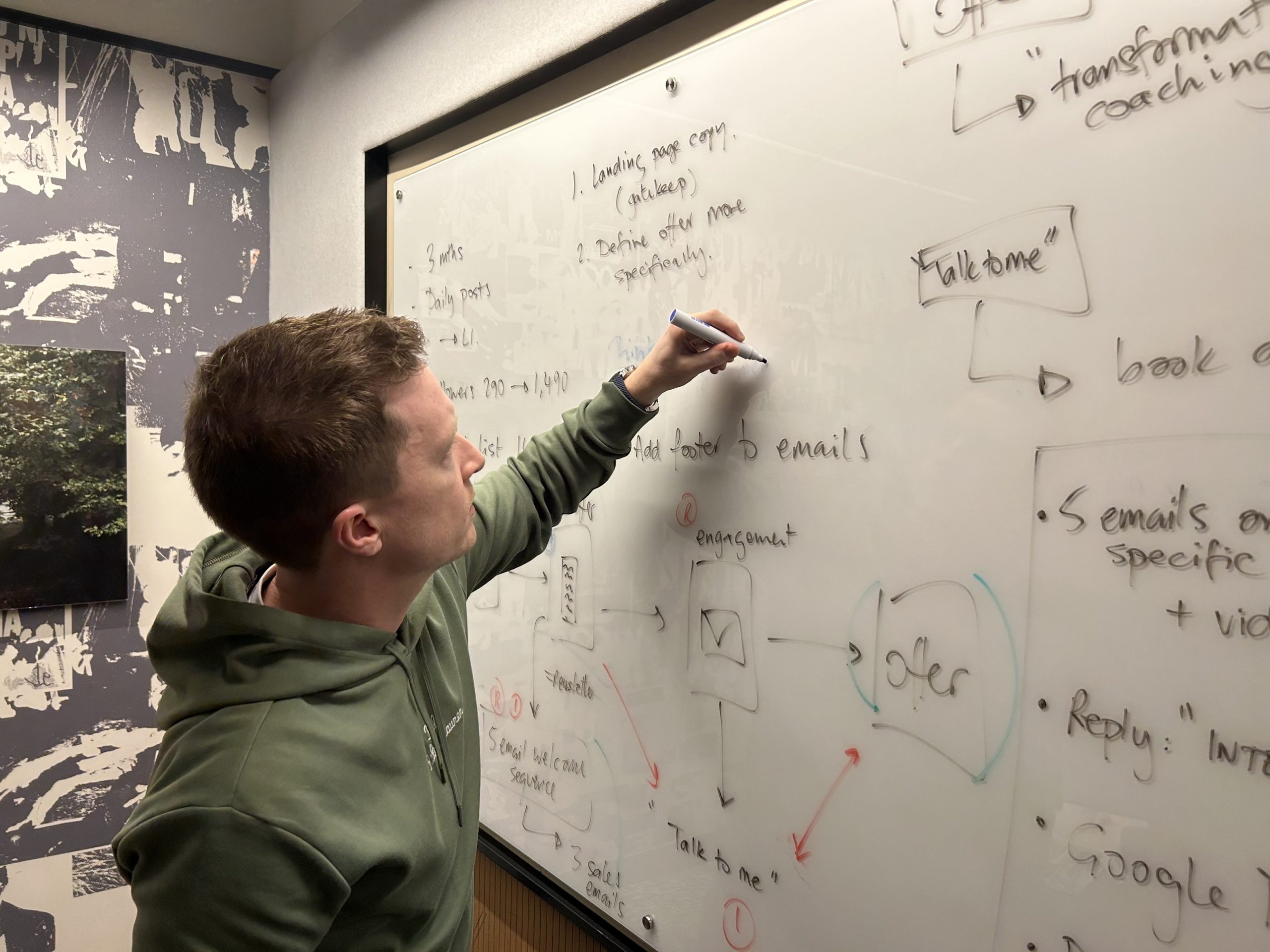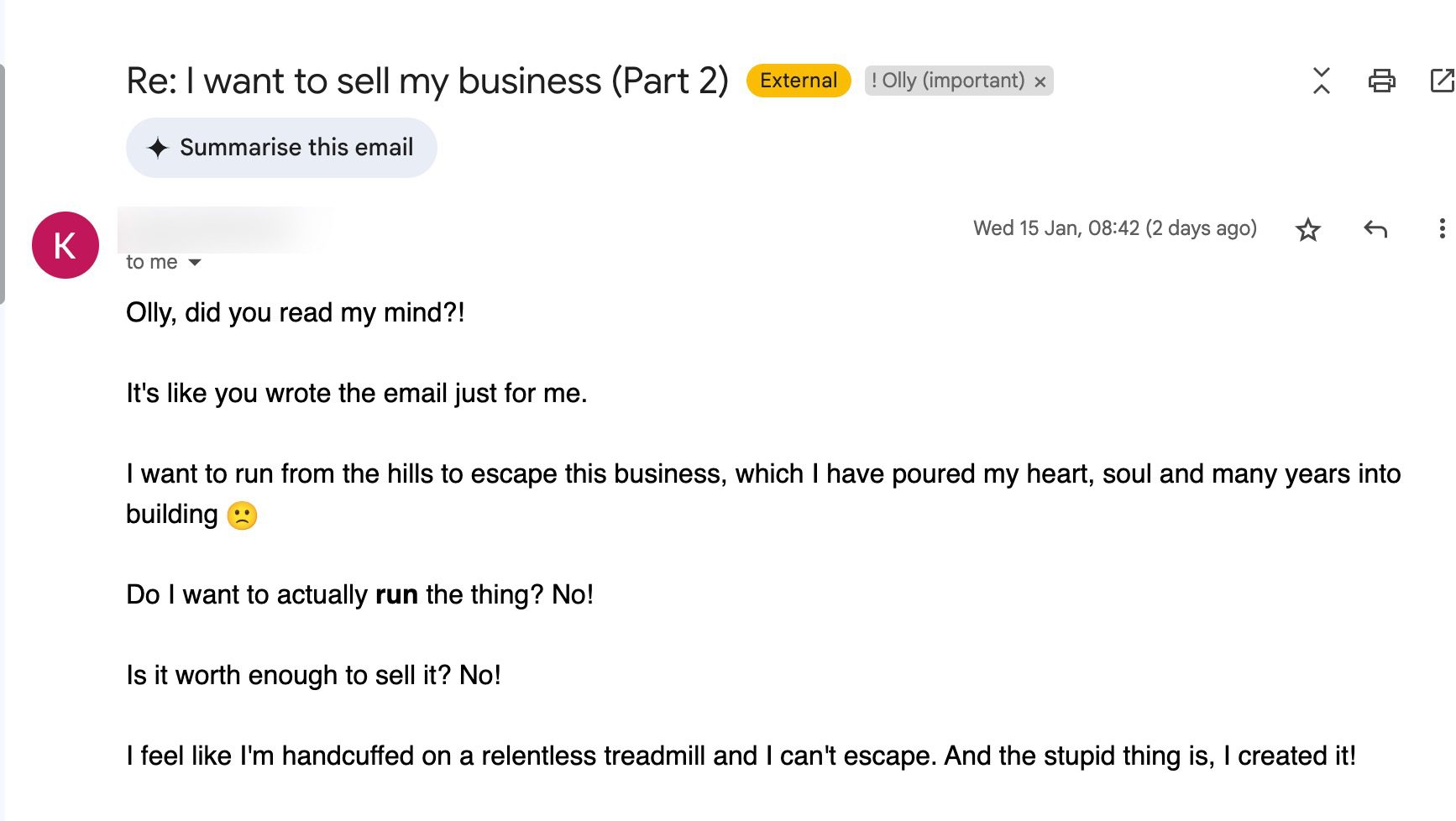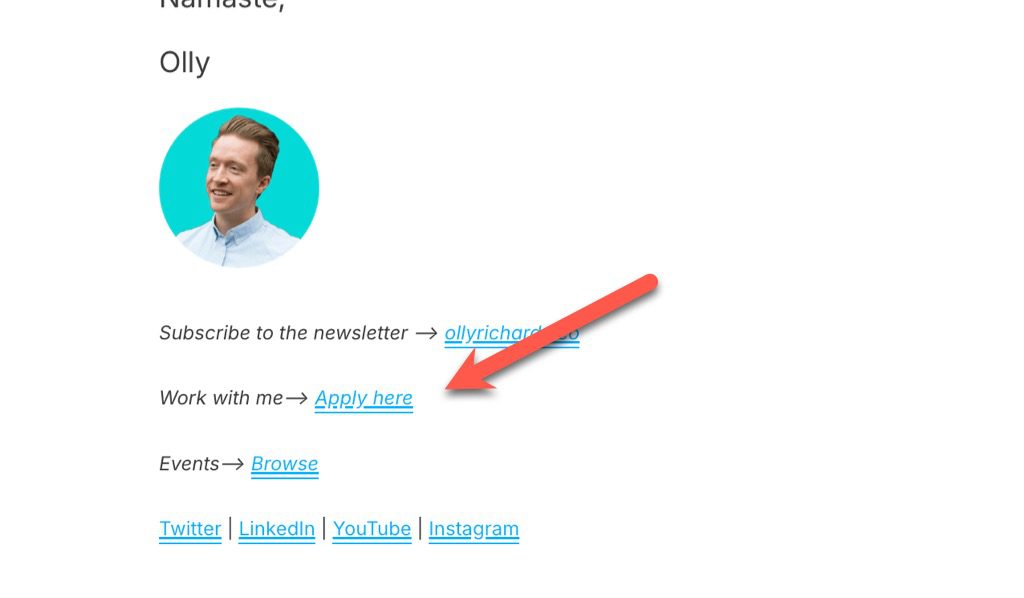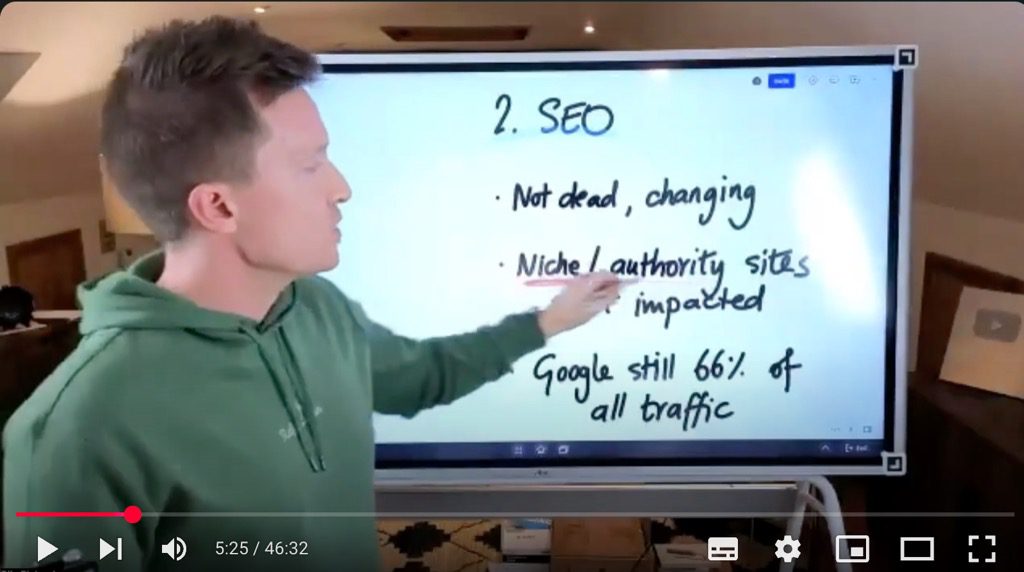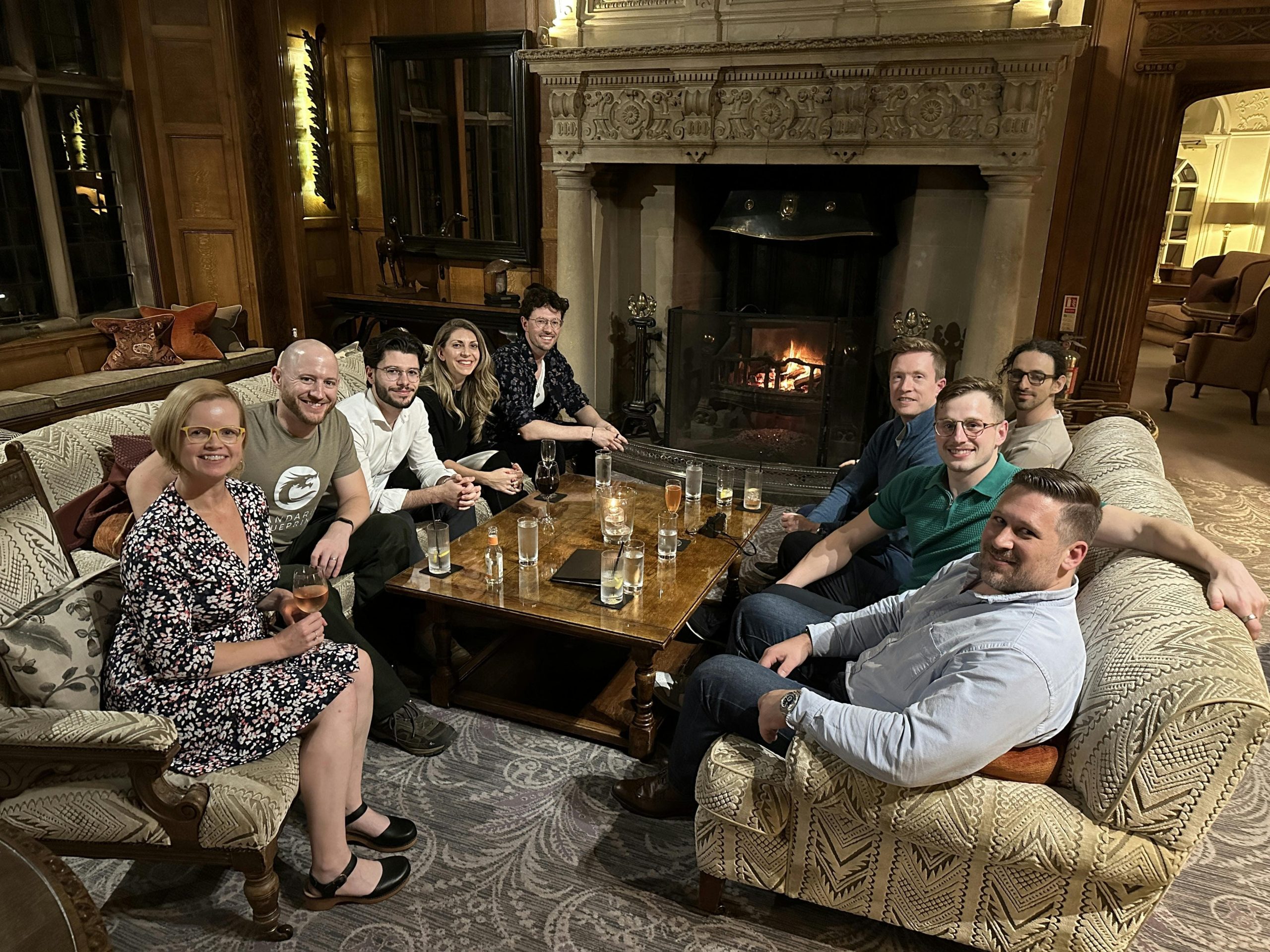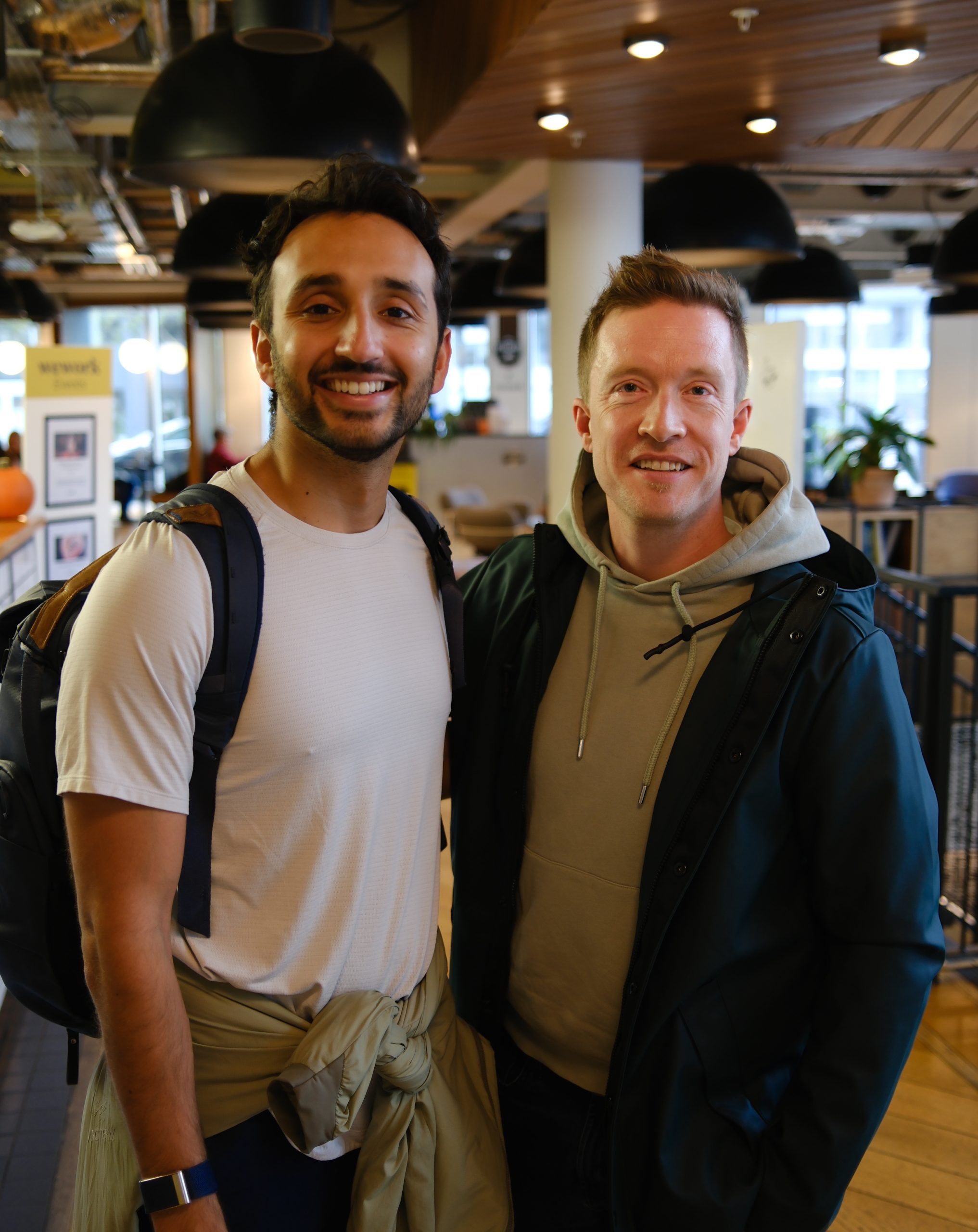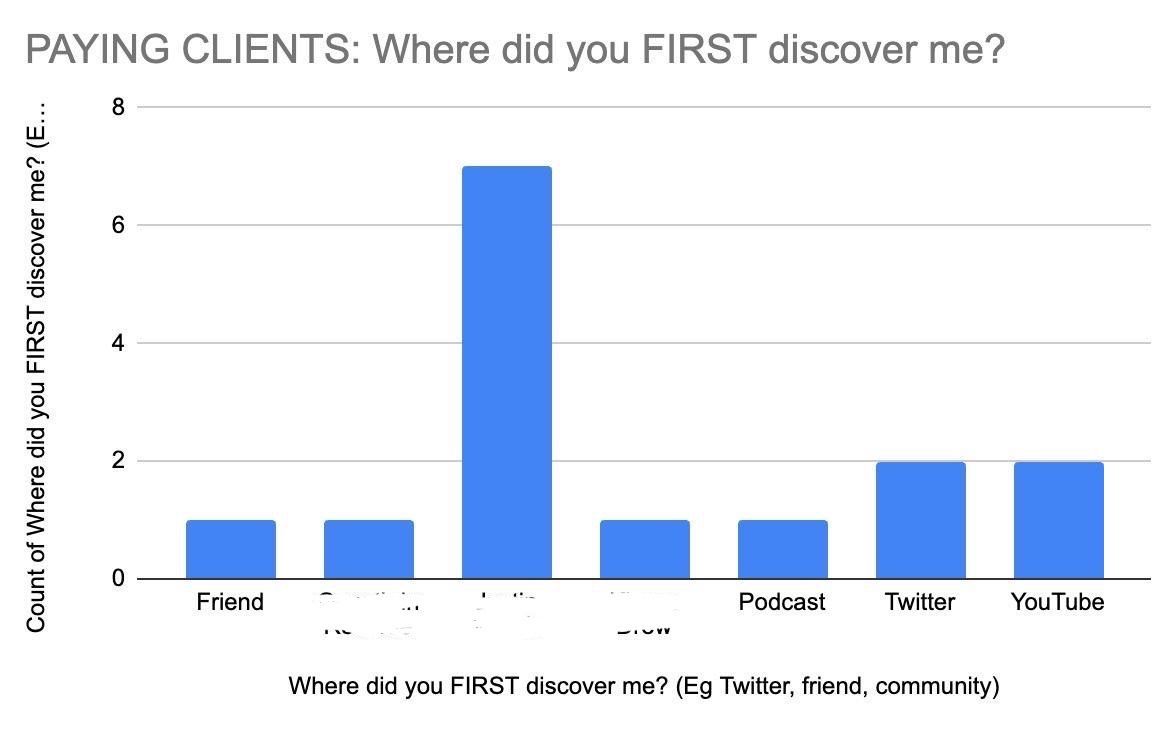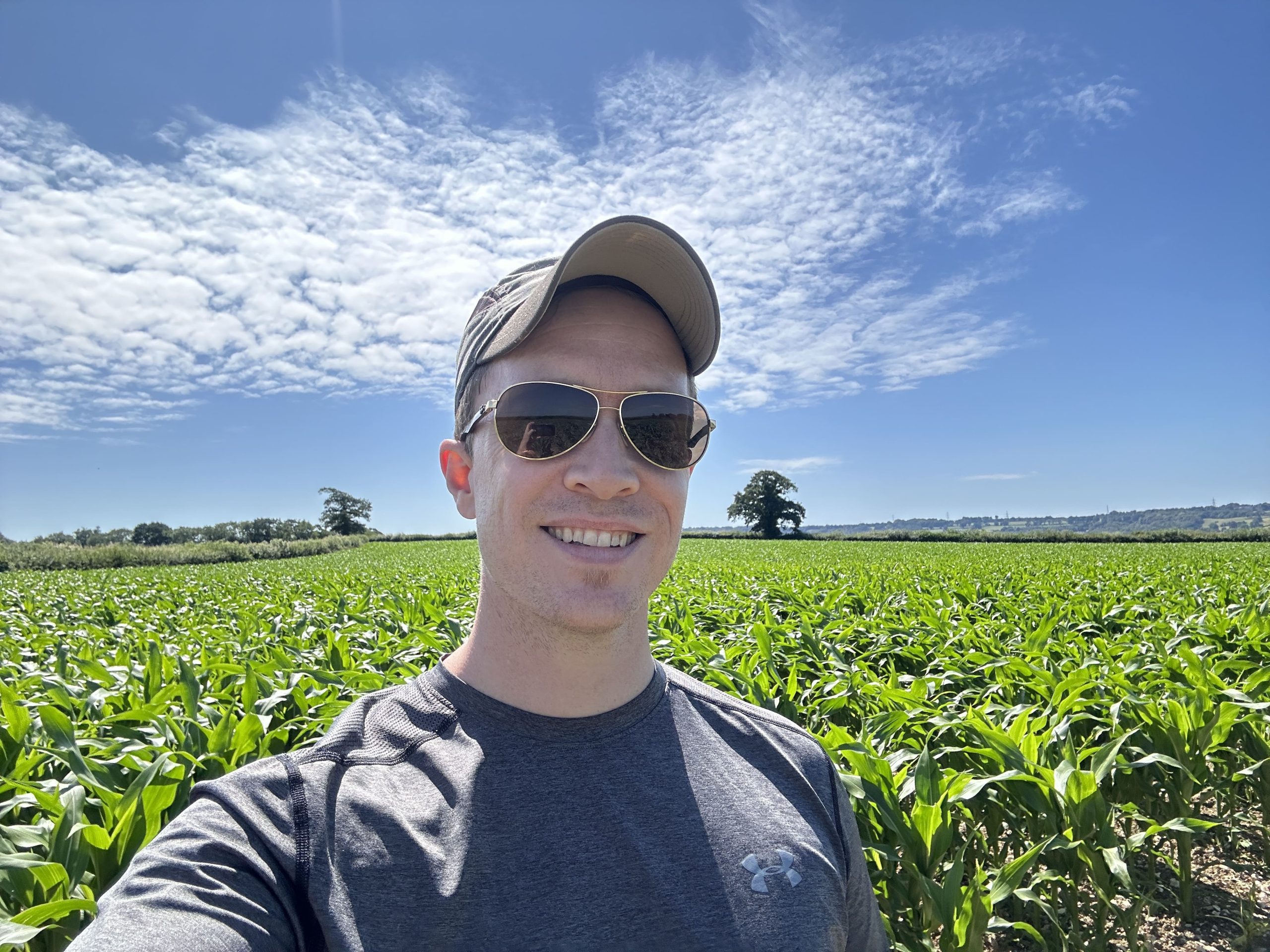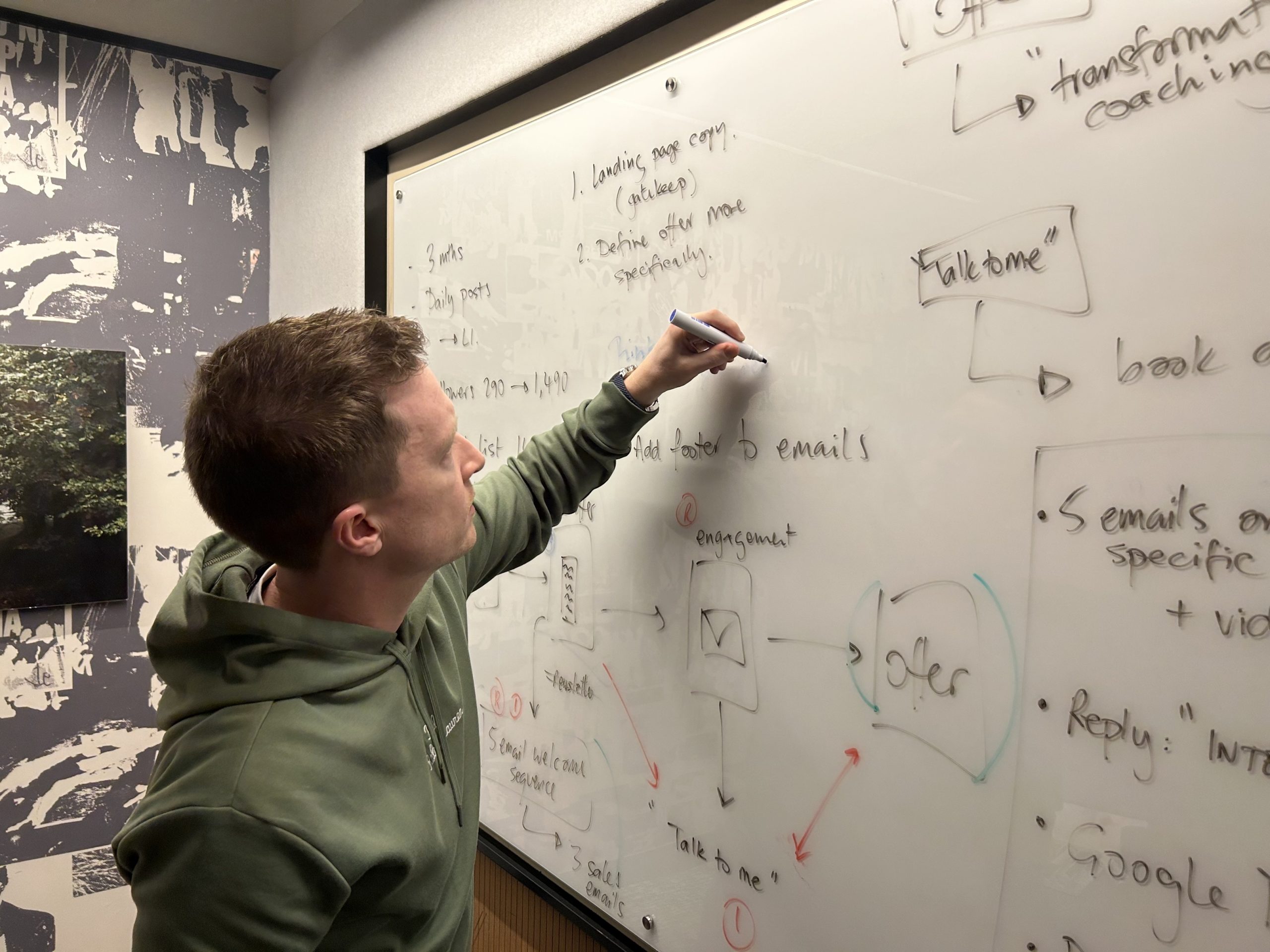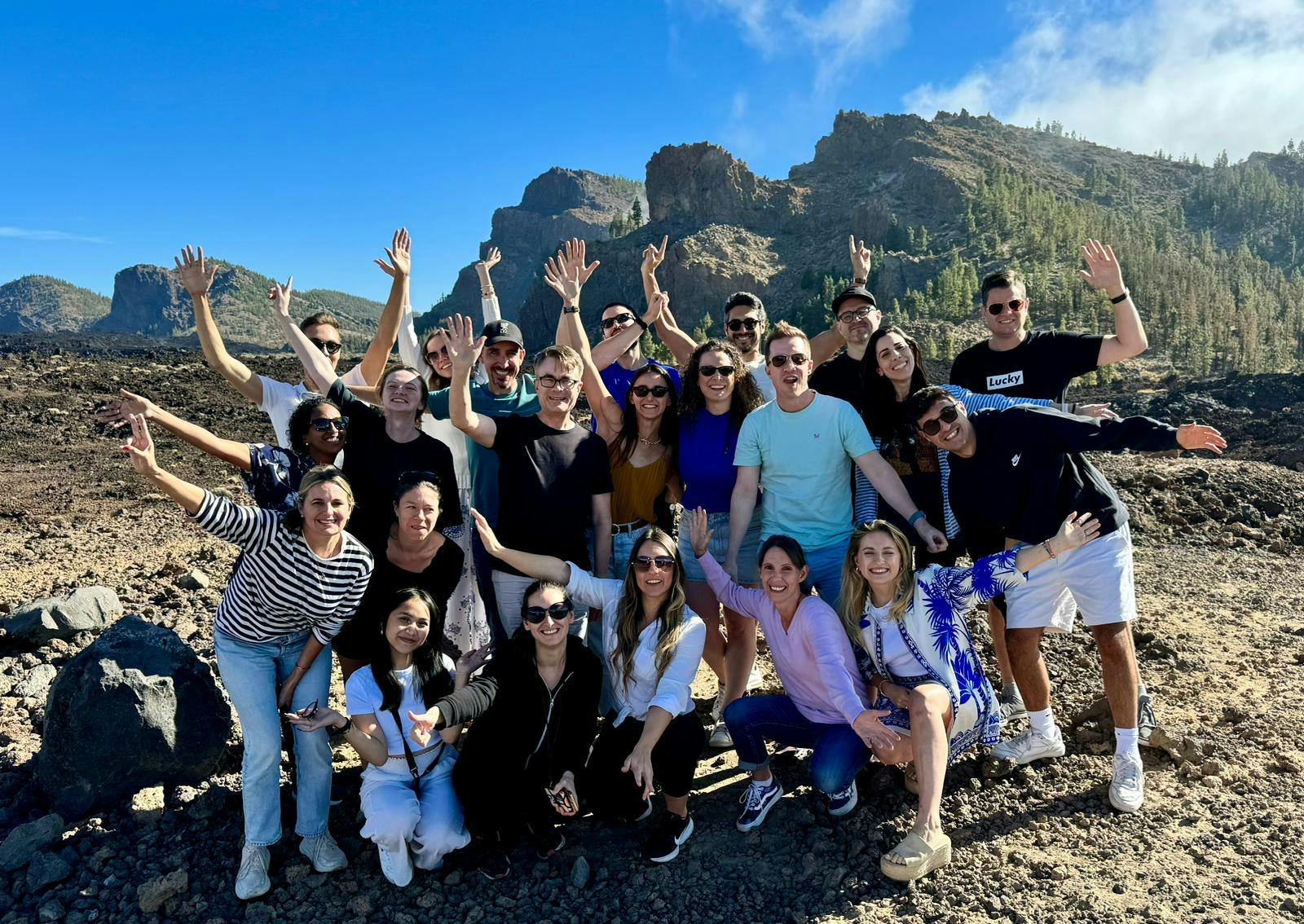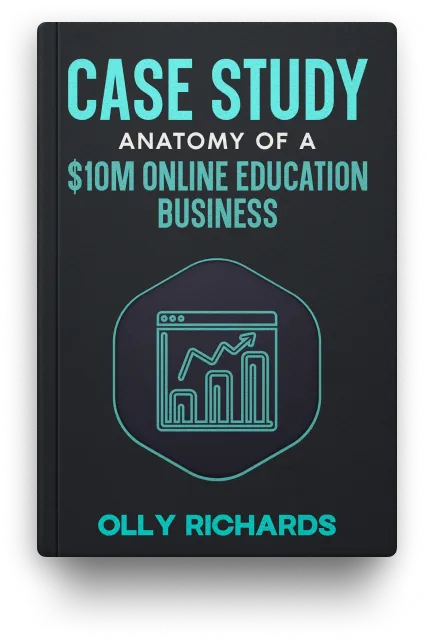Welcome to my annual review from the year that was 2024.
Here’s the context:
- My rationale for starting this newsletter business in the first place
- How I made $175k in the first year of business (2023)
- My plan for making $1 million
Now, let’s dive in…
The Year in Numbers:
The numbers from my business newsletter in 2024:
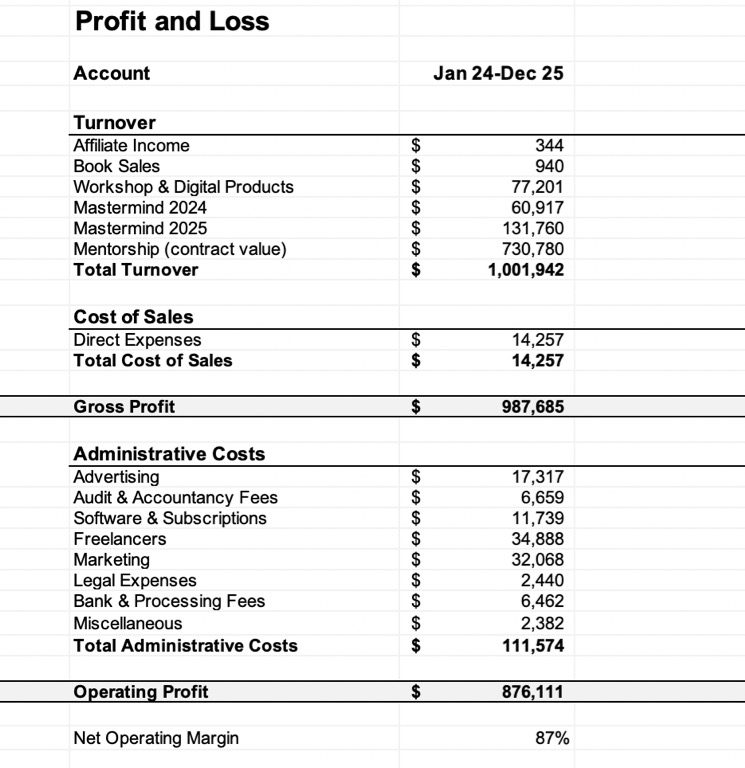
Well, I’ll be a monkey’s uncle…
Made it by the skin of my teeth.
So, what the hell happened?
What Happened in 2024?
My big plan going into 2024 was to be more proactive in offering my mentorship programme.
See, the year before, I had sold $157,500 of the mentorship without actually offering it anywhere – people just started randomly emailing me asking for help.
And so, I as I wrote in last year’s review:
“Given that I made $157k without any selling whatsoever, it stands to reason that I should be able to 5-10X this number if I started proactively selling.”
I then made a guesstimate:
“Let’s say I could 5X mentorship revenue if I actually tried selling it. So: $157,500 * 5 = $787,500.
Truth is, I just plucked that number out of thin air, based on intuition.
So, did I whip out the big selling guns and blast everyone with my mentorship offer in 2024?
Did I f***.
In fact, despite my best intentions, I didn’t make a single offer for the mentorship in the first 11 months of 2024. ♂️
I think the truth of the matter is that I’m simply not in a rush to grow this business, and where there’s an absence of pain… you’re going to find an absence of action too.
And so it was with me in 2024.
Anyway…
You don’t need to hear my first-world-problem laments, just suffice it to say that I didn’t pitch the mentorship at all.
Not exactly a stellar performance from Olly.
However…
By a freakish turn of events, and entirely in spite of myself, I did actually end up selling more of the mentorship…
To the tune of $730,780.
Now…
Given my prediction of $787,500, 12 months earlier, this feels like a very odd result indeed.
Perhaps it’s true what they say about goals…
Just by “picking a number”, you’re more likely to hit it than if you did nothing.
So, how do I explain this 400% increase on mentorship revenue from the previous year?
Here are my reflections:
- My content got a lot better and I published a lot more of it
- I added a Mentorship button to my website and a “work with me” link in my email footer
- I ran a big webinar at the end of the year about what’s working in online education (edited version coming to YouTube soon)
These are three big lessons that you can take straight to the bank, so let me unpack them…
1. CONTENT – With any business, demand is generated by your ability to put the right messages in front of the right people. Consider this email:
Quite simply, if you understand your avatar and make content they crave, they’re going to want to work with you. If you can connect with your audience on this level… You can screw up all the other marketing and still do really well. I’ve seen this pattern repeatedly: businesses with crystal-clear messaging outperform those with fancy tactics but muddy positioning. (As I expertly demonstrated by screwing up all my marketing last year.)
2. WEBSITE BUTTON & EMAIL FOOTER – If you get step 1 right, the next step is to just not get in the way. People who are consuming your content will search out the next step on their own, so you just need to make it available. The year before, I didn’t have any email or website links to apply to work with me, so someone had to speculatively email me to ask for help – which is legit friction. I removed the friction by just leaving breadcrumbs to follow in the lightest possible way.
|
These are the material things I did differently this year to create demand for the mentorship.
Don’t make the mistake of thinking that this approach applies only to me – these are fundamentals which can be used to grow any business.
Which of the three could you do a better job of?
Other Revenue
Mentorship accounted for $787,500, but where did the other $213,500 come from?
Well, one of my goals going into last year was to better understand the potential of the business.
What would people actually value and pay for?
So, I ran:
- a bunch of (paid) live workshops
- a course (AI Email Mastery)
- a 2-day mastermind event
- a 1-year mastermind
- I turned my Case Study into a book
Fortunately, all these were successful, which allowed me to lean quite heavily into them as the year went on:
- Workshops were popular, so I kept running them
- The Hobbitshire mastermind was a great success
- So I evolved the offer into a 12-month group in response to feedback from the last event. (This sold out in about 10 days.)
- The AI course sold 3X more than the regular workshops, so I’ll be making more courses. (Was the success just down to the AI topic? We’ll find out.)If you’re curious about how I’m using AI to dramatically scale email marketing (both mine and my clients’), I’ve packaged those lessons here.
The big lesson here for a new and growing business is:
The faster you can iterate and experiment with offers, the faster your business can find its groove and evolve into what it needs to be.
Iterate fast.
Try new things.
Be ok with things failing.
Oh, and for the love of God: Do more of what’s working!
A Note on Margins
More than the $1m revenue figure, what I’m most pleased with is the 87% net margin on the year.
You can find many people online who talk about making $500k/mth or whatever…
But what they don’t talk about is their 30-person team that costs them $150k/mth, their $200k/mth ad spend, and their co-founder who they have to share all the proceeds with.
I believe more and more that, if you’re going to build a big team in your business, you’d better make damn sure the business is legitimately scaleable.
Because if your business is not scaleable (like many creator or personal brand businesses), you’re going to end up hitting a hard revenue ceiling with high fixed costs and minimal profit at the end.
I’ve been very intentional in running this business in an extremely lean way, because I think there’s a lot of danger in “scaling” a coaching or personal brand business.
A few observations:
- my avatar is 6-7 figure online education business owners
- there simply aren’t all that many of these people
- therefore there is a real constraint on the TAM
- in order to keep scaling, I’d need to start serving an entry-level audience (i.e. “make money online”), which I have zero interest in doing
Incidentally, this is why all the “grow your business with my 3-step system” ads on Instagram are aimed at early-stage / struggling businesses – it’s the only way these guys can find enough new audience to continue to grow.
But if you don’t want to stray into the beginner audience, you need to acknowledge the limits of your crowd, and the question then becomes:
How to make your business work economically in the most efficient way possible.
Personally, I’ve decided that the answer is to leverage my personal brand as heavily as possible, while keeping costs at a minimum.
The path to growth, then, will be to keep strengthening my personal brand so I can raise prices.
While the business stays hyper-lean.
The alternative would be to evolve a digital product component to the business in order to provide education to a wider group of people.
I’m thinking about this, but that’s a topic for another day.
The lesson is:
Don’t let your margins be something you find out about at the end of the year, when your accountant delivers the P&L.
You get to decide what your margins are.
Have a goal for your margins, based on what you know about the age, trajectory and inherent scaleability of your business… and then design your business around that.
It pays to be intentional with high-level finances.
And the less confident you are with finances, the more you need to take this seriously.
(If you suck at finance and want a recommendation for a great bookkeeper / CFO team, let me know.)
Shift from Newsletter to Regular Emails
One of the big changes I made during 2024 was to move away from the “editorial newsletter” model and towards the traditional direct response list model.
For the first 18 months of the business, I wrote massive long email newsletters that I’d send out every Friday.
These were great, and got a great response, but I decided to ditch that model in favour of shorter, more regular emails.
(They’re still not quite daily, even though I have that ambition.)
Reasons are:
- I had so much to say, but not enough opportunity to say it
- Each newsletter took me a loooong time to write
- Because they were so long, people often didn’t read them (even if they were interested)
- Once a week isn’t enough frequency to be top-of-mind, which isn’t great for brand building
By the same token, I was flouting a couple of golden rules:
- more emails = more money
- money is attracted to speed
And so, I stopped my gargantuan Friday emails and started sending shorter, sharper emails 2-4 times a week.
(I aim for 5, but I’m not there yet.)
Interestingly, I haven’t had any particular feedback from you guys on this shift.
However, three things I observed:
- I feel like I’m writing with far more energy
- I get more responses from my audience (because I’m covering more topics)
- I made 5-6X more money
Sure, there’s some correlation / causation stuff going on there, but what’s for sure is that the shift didn’t go badly.
People Want Different Things
Next lesson is that people want different things.
My 80/20 on revenue is from my mentorship, but I would have lost out on $271,000 if that’s all I’d done.
One of my goals coming into last year was to ask the question:
“What is my audience predisposed to buy?”
i.e. try different things and see what people actually want and pay for.
This fell into three main categories:
- Courses & Workshops
- Live events
- Mastermind
In each case, launching these things was super lean.
Workshops – I pre-sell them and give myself the opportunity to back out if there’s no demand.
(In fact, one workshop I did end up pulling the plug on mid-launch because there was very little demand. There’s a big lesson here in testing demand for stuff before you make it.)
Events & Masterminds – Working 4-5 months in advance, sending out a simple Google Doc with the offer and having people apply. Plenty of time to see the demand.
My Hobbitshire mastermind sold out in 24 hours that way.
The 2025 mastermind also sold out fast. (After a shaky start, which was entirely my fault. Tldr; don’t send offers on New Year’s Eve. Who knew?)
I was fortunate in that most things I tried last year worked well, but that won’t always be the case, and what I’m pleased about is the fact that I tried.
List Growth
I continued to build my list last year in much the same way as I did before.
See, I asked my private clients where they originally found me, and this is what they said:
Newsletter sponsorships continue to be the clear winner, but what made it particularly effective last year was that I spent the previous year (2023) experimenting a LOT, thereby allowing me to double down on the right things, and is presumably a big part of what made it effective.
(The lesson here for you is NOT that newsletter sponsorships are the best way to grow a list. The lesson is that you gotta try a lot of stuff, carefully track the results, and then double down on the stuff that you observe to be working.)
But it’s also apparent that my overall brand building is a big part of the equation:
- friend
- someone mentioned you
- podcast
And in reality, attribution is extremely unreliable when the numbers are so small. (I only work with around 20 private clients, so every new response skews the stats.)
The reality is always more like:
- a friend mentions you
- they look you up on social media
- they see a podcast clip of you
- a newsletter mentions you, so they go to your website and opt-in
- etc
What’s the true source of the attribution?
Impossible to say.
This is an extension of my “The Case Against Data” email from the other week.
I often see people reading faaaaaar too much into marketing attribution data, when the more sensible route is to just observe and use common sense.
In my case, it seems clear that the content I’m creating is drawing people to me, and I’m doing a reasonable job of both creating it, and getting it out there.
Therefore, I should just keep doing that across the board, always trying to improve:
- go on podcasts
- publish YouTube vids
- be on social media
This has the happy coincidence of building my brand in the coolest way over the long-term and avoids the overt “everything he does has an agenda” feel that’s present in virtually EVERYONE’S marketing, especially across the pond in the US.
Resisting Entry-Level Offer
Last but not least, I want to mention something that I did NOT do last year.
Because so much of success, I think, is to be found in your willingness to say ‘no’ to things.
(This is recurring theme in my mentorship. I spend as much time telling people NOT to do stuff, as I do telling them what to do. Focus, focus, focus.)
Anyway, what I didn’t do last year was create an “entry-level” offer…
Like a $5,000 cohort, a $100/wk “growth” offer, or a group coaching programme – the stuff you see everywhere in the coaching industry.
I’ve been aware since the beginning that the absolute easiest way for me to make more money now, would be to create something for the 80% of my audience who are not 6/7-figure business owners.
And I’ll be honest…
I spent quite a bit of time last year thinking about it.
Investigating options.
Pondering what I might offer.
…but ultimately talking myself down from the edge.
You know that saying: “Never interrupt your enemy when they’re making a mistake”.
My version is: “Never interrupt yourself when you’ve got something good going on.”
The simple fact is that my business model is working super well right now, and so the ONLY thing I need to focus on is doing more of the right thing:
- better content
- more consistent products and emails
- serving my mentorship clients as well as possible
- keep growing my list
The easiest way to screw this all up would be to add something else that is:
- more time-consuming
- to a different audience segment
- doesn’t benefit my main avatar
And I admit it’s hard to resist.
And I wavered a couple of times during the year.
Not least because it feels wrong NOT to be helping those in my audience who are in the earlier stages of their journey.
But, in the end, you have to be working to a goal, or you end up somewhere you don’t want to be.
Last Time I Do an Annual Review?
I’ve often been critical of people who #buildinpublic and publish their income reports online.
People usually start doing this because they think it’s inspirational to those in their audience who are just getting started.
And it probably is.
But the problem is, when the whole message of your business is “Look, I made money and you can too!”, you fast run into problems when you make so much money that your audience can no longer relate.
Do you think, for example, that me saying “I made $1,000,001 last year!” is a helpful message for someone just getting started?
I don’t think so.
And so what I would say to someone doing this is this:
The entire premise of your business is living on borrowed time.
It’s better to figure out what you REALLY want to be known for, and make that your USP right now, so that as you grow, your bond with your audience strengthens, not diminishes.
This is the second time I’ve written an annual review for this newsletter.
Outside the annual review, I don’t #buildinpublic.
I think the reason I wanted to start doing the reviews was almost out of imposter syndrome – starting a new business I wanted to convince myself that I could do it.
So perhaps I was just acting as my own cheerleader.
Either way, I’m not sure it continues to make sense to do it.
One possible path would be to start teaching others how to build their own 7-figure coaching business, working two days a week. (What I currently do, for the most part.)
Would that be interesting?
Probably.
Would it work?
Undoubtedly.
Would I end up the same as everyone else?
Yup.
So, I don’t know.
For now, I’m just going to keep being Olly, and for as long as you’d like to stick around, you’re very welcome!
Summary of Lessons
Sure, here’s a refined list with only the core, discrete lessons:
- Create content that deeply resonates with your target audience (There is no “too much” here. An inch wide and a mile deep at all times.)
- Remove friction by making it easy for people to take action
- Use live events like webinars to channel attention and create momentum towards a sale
- Test demand for offers before committing time or resources
- Double down on what works and cut what doesn’t
- Understand the constraints on your growth and keep your overheads proportional. (It’s easy to add overhead, harder to remove it, and it’s all money out of your pocket at the end of the day.)
- Think harder about aligning your business with your life goals
- Brand rules supreme in the long-term, so try to balance activity in the here-and-now, with things that serve you over a longer time period
That’s it.
Here’s to a great 2025!
Namaste,
Olly
